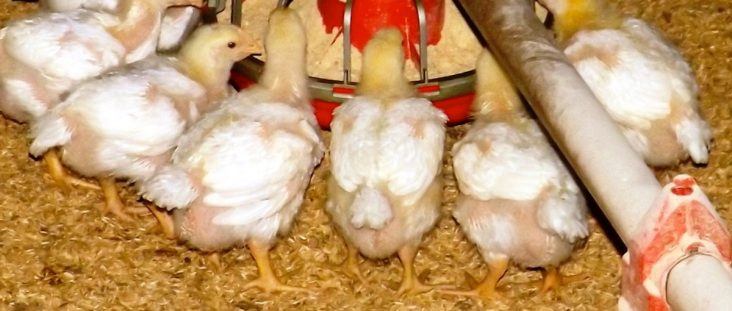Chicken consumption in U.S. could reach another record in 2017
by July 19, 2017 9:33 am 667 views

American consumers may eat almost 92 pounds of chicken per person this year, which would best the 91 pound per capita record set in 2016, according to the latest research conducted by the National Chicken Council.
That said, consumers recently moderated chicken consumption to levels seen about two years ago as lower priced beef is winning more favor with some consumers, particularly in the summer grilling season.
The NCC said the recent survey found 84% of consumers ate a chicken meal or snack purchased from a supermarket, and 67% ate a chicken entree from a restaurant. The consumption of chicken from supermarkets and restaurants is down 3.4% and 6.9% from levels seen in 2015.
“Although consumers’ self-reported consumption is down slightly in the survey, the data show that chicken is still top of mind for consumers,” said Tom Super, spokesman for the NCC.
When asked about consumption 21% of respondents anticipate eating more chicken from supermarkets and 13% said they will likely eat more chicken at restaurants over the next year. The report also found households which skew younger and are more diverse ethnically have the higher consumption levels of chicken.
Uncooked or precooked chicken is what the majority of consumers said they purchase at the supermarket, which is prepared or reheated at home. Baby boomers and those in Generation X are more likely to buy uncooked chicken, while millennials are twice as likely to buy pre-cooked chicken and consume it in the store.
Consumers in the survey ranked various factors in order of their importance and freshness was the top trait consumers said they were looking for in chicken, regardless of where they purchase it. Taste and price rounded out the top three factors high on consumers’ lists when buying chicken.
OTHER DEMANDS
Consumers are also pushing for more natural chicken choices, with 69% of respondents concerned about food safety. Hormones, steroids and antibiotics are also additives to chicken that 57% of the public said they will not buy. Tyson Foods as of June completed transitioning its grower farms to no longer using antibiotics.
“This makes us the world’s largest producer of no-antibiotics-ever (NAE) chicken. Consumers may start to see the NAE label on some chicken products at their favorite retailer, but we’re committed to delivering on this promise and all fresh and frozen Tyson branded chicken we sell to your local retailer will be NAE by this fall. Later this year, Tyson Foodservice will offer chicken raised without antibiotics ever under several brands such as Tyson Red Label,Tyson True and Tenderpressed,” according the Tyson Foods website.
The meat giant said only a very small percentage of its broiler chickens will ever receive antibiotics, which are given only as needed and prescribed by a veterinarian. That chicken will not carry the NAE label.
Pew Charitable Trusts recently released a report on alternatives to antibiotics in animal agriculture. Pew looks at some of the most widely used alternative products — such as vaccines, probiotics, and prebiotics — and found that while there are some antibiotic alternatives that have shown promising results for growth promotion and disease prevention, their efficacy tends to vary across animal populations. In addition, significant data is scarce on how well some products work in real-world settings.
However, the Pew report concludes that priority should be placed on the areas of greatest need in animal agriculture to reduce antibiotics. Under new U.S. Food and Drug Administration (FDA) rules that went into effect Jan. 1, farmers can no longer use medically important antibiotics for growth promotion, and they will need a prescription for continued use of these drugs for disease prevention.
Tim Johnson, DVM, a professor of veterinary medicine at the University of Minnesota and one the experts consulted for the report, said the poultry industry, in response to the growing consumer appetite for chicken raised without antibiotics, has taken the lead in testing alternative products and figuring out which type of product works best for a given company.
“The broiler industry — particularly companies like Tyson, Perdue, and Cargill — has really latched on to the idea that with a no-antibiotic-ever platform, they need to have products that will at least help gut health and will help reduce disease and mortality,” Johnson said. “They’re very big believers in these products.”
